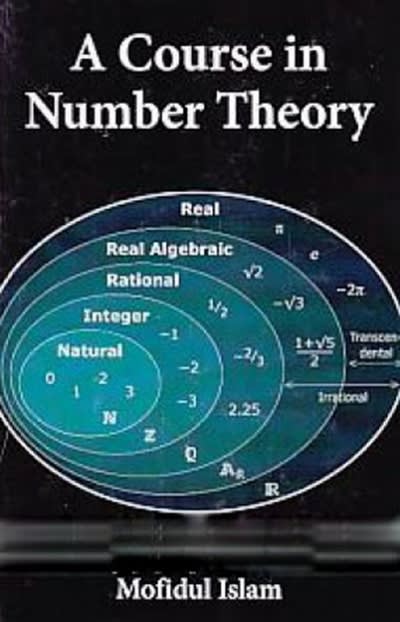Question
I need help please. a) What types of things can a histogram help us visualize? Question 1 options: Shape of distribution (normal, right-skewed, left-skewed) Presence
I need help please.
a)
What types of things can a histogram help us visualize?
Question 1 options:
Shape of distribution (normal, right-skewed, left-skewed)
Presence of outliers
Modality (unimodal, bimodal, multi-modal)
Quartiles Values (1st quartile, 2nd quartile or median, 3rd quartile)
b)
What is the box, in a boxplot, defined by?
Question 3 options:
lower bound and upper bound
lower whisker and upper whisker (min value and max value)
1st quartile and 3rd quartile (25th percentile and 75th percentile)
median and mean
c)
Group A has a mean of 20 and median of 40
Group B has a mean of 30 and median of 40
Which of the following is most likely true?
Question 7 options:
Group A and B likely have similar skews or outliers
None of these
Group B likely has a skew or outlier greater in magnitude than Group A
Group A likely has a skew or outlier greater in magnitude than Group B
d)
Question 8 (3 points)
Listen
Distribution A: mean = 20, median = 20, s = 5
Distribution B: mean = 10, median = 10, s = 5
Which of the following is most likely true?
Question 8 options:
These distributions are equally spread, but distribution B is simply lower than A
Distribution A likely has an outlier, causing its values to be higher
Distribution B likely has an outlier, causing it to be lower than A
None of these
e)
Consider multiple trials of flipping a fair coin.
As the number of trials decreases, the closer we get to an equal split of heads and tails.
Question 15 options:
True
False
f)
This approach to probability is often referred to as the subjectivist approach.
Question 17 options:
inferential
other
frequentist
bayesian
descriptive
g)
A(n) ___________ is one observation of an event.
Question 18 options:
trial
sample space
experiment
outcome
h)
Consider the following example for a binomial distribution.Identify the value of "N."
You have a perfectly shuffled deck of 52 cards (containing 13 cards in each of the 4 different suits: hearts, clubs, spades, and diamonds) Given that you draw 5 cards, you are interested in the probability that exactly 2 of them are diamonds.
Question 21 options:
1/4
2/5
5
2
4
g)
What does "N" represent in a binomial distribution?
Question 22 options:
size parameter
results of experiment
success probability
h)
Which of the following are continuous probability distributions?
Select all that apply.
Question 24 options:
chi-square distribution
binomial distribution
F distribution
t distribution
normal distribution
i)
Which of the following are true about the F distribution?
Select all that apply.
Question 30 options:
The distribution is left skewed.
The observed values on the x-axis must always be positive.
The area under the curve is 1.
There are two degrees of freedom.
Step by Step Solution
There are 3 Steps involved in it
Step: 1

Get Instant Access to Expert-Tailored Solutions
See step-by-step solutions with expert insights and AI powered tools for academic success
Step: 2

Step: 3

Ace Your Homework with AI
Get the answers you need in no time with our AI-driven, step-by-step assistance
Get Started


